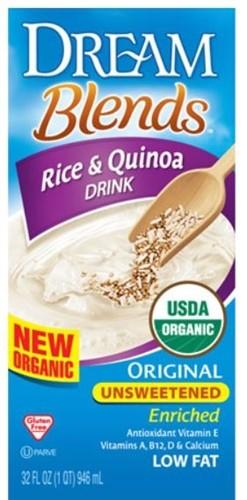Increase plant-food intake to support good health by choosing plant-based proteins to replace some animal proteins in your diet.
Eating more plant-based foods is associated with longevity and reduced risk for most chronic diseases, including heart disease and type 2 diabetes. Plant foods- such as whole grains, beans, fruits, vegetables, nuts, and seeds- are rich in health-promoting nutrients and compounds including vitamins, minerals, fiber, and phytochemicals. But, despite what some people think, plants can also be a good source of protein.

What is a Protein? Proteins are chains of amino acids, molecules that are involved in a variety of biological functions, and are found in the cells and tissues of all living things. There are twenty amino acids, nine of which cannot be synthesized in the human body and must be acquired through diet or supplementation. These are known as essential amino acids. Animal sources of protein (and a select few plant proteins including soy and quinoa) are considered “complete” in that they contain adequate amounts of all of the essential amino acids.
Most plant foods are considered “incomplete” proteins, because they typically have low levels of, or are missing, one or more of the essential amino acids. For example, grains are low in the amino acid lysine, but have adequate methionine. Legumes (beans, lentils, chickpeas, peas, and peanuts), on the other hand, contain adequate lysine, but are low in methionine. Thus, a dietary pattern which includes both whole grains and legumes will provide a sufficient amount of all essential amino acids. Although it was once thought that complementary foods such as these needed to be consumed at the same time, it is now understood that eating a variety of plant foods throughout the day can provide all the amino acids the body needs. For an entirely plant-based diet, eating a wide variety of plant foods helps assure that essential amino acid requirements are met.

The two basic types of plant-based diet plans.
Plant-Based Diet: Typical plant-based diets are ovo-lacto-vegetarian (which includes dairy products and eggs along with plant foods) and vegan (which eliminates all animal products, including honey), but a “plant-based” diet can also be one that simply maximizes plant food intake and reduces animal proteins.
Not all plant-based dietary patterns are equally beneficial. Researchers from Tufts University published a study in The Journal of Nutrition which found that plant-based dietary patterns with high levels of minimally processed plant foods (such as whole grains, beans, nuts, seeds, fruits, and vegetables) were associated with lower risk of all-cause mortality, but plant-based diets with low levels of these choices were not. The key is to make sure you follow a “healthy” plant-based diet rich in minimally processed foods, and not junk foods.
Research, including a 2018 study in the journal Nutrients, has shown that meals based on plant protein sources such as beans are just as filling and satisfying as meals containing animal proteins. According to a 2018 report by a global information company, consumer demand for plant-based protein is growing. Fourteen percent of U.S. consumers surveyed for the report indicated regularly consuming plant-based protein sources such as tofu and veggie burgers, even though the vast majority did not consider themselves vegan or vegetarian.
Choosing plant-based proteins has a dietary impact beyond protein quality. Replacing some animal proteins with plant foods such as beans for example, increases intake of fiber which is generally under-consumed in the American diet.
 Lysine-rich legumes complement grains to achieve an adequate intake of all essential amino acids.
Lysine-rich legumes complement grains to achieve an adequate intake of all essential amino acids.Plant Protein Sources: Since proteins are essential to all living things, by definition, every plant contains at least some protein.
Legumes (a broad category that includes all varieties of beans, lentils, chickpeas, peas, and peanuts) contain lysine, which is in short supply in many other plant foods. For those who choose to avoid or significantly reduce intake of animal foods, eating legumes daily supplies the needed amount of this amino acid. Just one half-cup serving of legumes can provide up to 10 grams of protein along with a respectable amount of fiber.
Whole Grains should not be ignored when considering dietary protein sources. Wheat, rice, corn, and oats are common grains in the American diet, but whole-grain choices such as barley, buckwheat, millet, and teff, and a variety of whole wheat grains (including wheatberries, farro, and spelt) are increasingly available options. Whole grains are preferred over refined grains because they have more beneficial components, such as fiber, minerals, and vitamins. A cup of most whole grains will provide between six and twelve grams of protein, and whole-wheat pasta has seven grams of protein per one-cup serving. The combination of beans and grains- for example, rice and beans, pita bread and hummus, and lentils and rice- has historically provided complete essential amino acids for protein synthesis for numerous cultures around the world.
Nuts and seeds contain magnesium (essential for relaxation of muscles), provide six to twelve grams of protein per quarter cup, and make great snacks or accompaniments to plant-based meals.

Meat substitutes/ analogues are becoming increasingly more available as consumers choose to eat more plant-based meals.
While whole foods should be the bulk of one's diet because they are the best source of nutrients and beneficial components such as phytochemicals and fiber, meat substitutes (meat analogues) can provide familiar tastes and textures in plant-based meals. Some meat alternatives are high in protein and make mealtime more satisfying, but some are also very high in added sodium and even added sugar, so be sure to check the Nutrition Facts label before buying.
Options such as tofu and tempeh are lower sodium, generally sugar-free, versatile meat replacement options. Animal foods, including meats, poultry, seafood, eggs, and dairy products, currently provide the bulk of Americans’ protein, and most people consume more than they need. On the other hand, very few children or adults reach recommendations for daily servings of fruits, vegetables, whole grains, or fiber. Minimally processed plant foods that contain protein are also packaged with vitamins, minerals, fiber, and phytochemicals that are associated with a healthy diet pattern. So exchange some plant protein for animal protein for a quick and easy health substitution.

5 Do's and a Don't for plant-based eating success.
1. DO eat legumes. Add beans, lentils, chickpeas, peas, and peanuts to your diet regularly.
2. DO try quinoa. This versatile grain choice is one of only a few with all the essential amino acids.
3. DO add edamame. These immature green soybeans are tasty sources of complete protein.
4. DON’T substitute plant milks without reading the label first! Except for soy and pea milks, plant milks are generally rather low in protein. An eight-ounce cup of almond milk has only one gram of protein, just one-eighth that of cow milk, and has over 40% calories from fat!
5. DO include nuts and seeds. A small handful a day is associated with health benefits.
6. DO try meat substitutes/analogues. Tofu, tempeh, mushroom patties, and seitan (wheat gluten) can be used in most diets.
 Holidays
Holidays  Girl's Behavior
Girl's Behavior  Guy's Behavior
Guy's Behavior  Flirting
Flirting  Dating
Dating  Relationships
Relationships  Fashion & Beauty
Fashion & Beauty  Health & Fitness
Health & Fitness  Marriage & Weddings
Marriage & Weddings  Shopping & Gifts
Shopping & Gifts  Technology & Internet
Technology & Internet  Break Up & Divorce
Break Up & Divorce  Education & Career
Education & Career  Entertainment & Arts
Entertainment & Arts  Family & Friends
Family & Friends  Food & Beverage
Food & Beverage  Hobbies & Leisure
Hobbies & Leisure  Other
Other  Religion & Spirituality
Religion & Spirituality  Society & Politics
Society & Politics  Sports
Sports  Travel
Travel  Trending & News
Trending & News 
Most Helpful Opinions